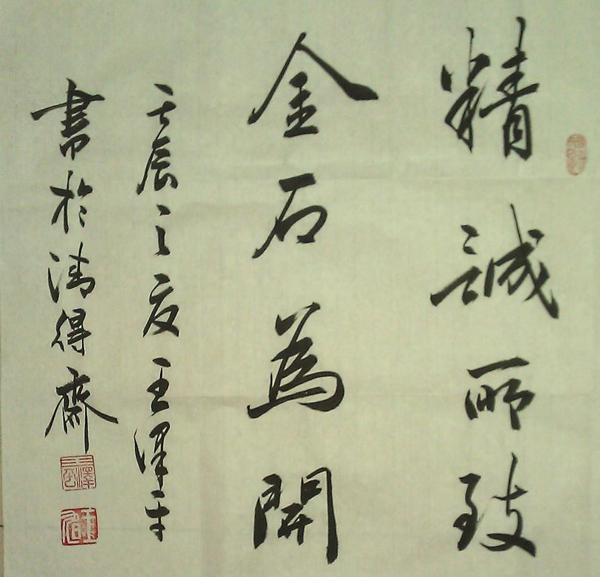Chinese Youths Go Calligraphic
In an age of keyboards and touch screens, the art of calligraphy still has the power to charm the younger generation. Sina-Culture Cup, the 1st International Calligraphy Contest was evidence most positive thereto. «Chinese calligraphy has a beauty of its own that can hardly be expressed in words,» Saana Virtanen, one of the winners, said. It is noteworthy that the young Finn was the only non-Chinese winner. «It’s all about the delicate balance of black and white. You’ve got only two colours, but the variations are infinite,» Saana explained. She also believed in order to master the art of beautiful handwriting you need to know the meaning of every character and the functions of all auxiliary elements.
According to Li Ingfan, a winner from a Henan secondary school, he had been studying calligraphy for eight years, which had built up his patience. «We must understand the essence of calligraphy,» Nicolas Piccioli, a jury member from Italy, believed. «It's aesthetics is nothing like those we are used to.»
At present, calligraphy is defined as one of visual arts. One of the ancient Chinese treaties traces the origins of calligraphy in nature, in the mutual transformations of the male and female principles, from which form is derived by the quill. Unlike the usual linear succession of letters, calligraphically depicted hieroglyphs are seen as written representations of thought. «Chinese hieroglyphs reveal the character of the Chinese people,» Han Qide, Vice-President of the Chinese People’s Political Consulting Conference on Calligraphy, concluded.
 Chinese Youths Go Calligraphic
Chinese Youths Go CalligraphicSource: visitchina.ru
Calligraphy is a remedy and mental gymnastics.



